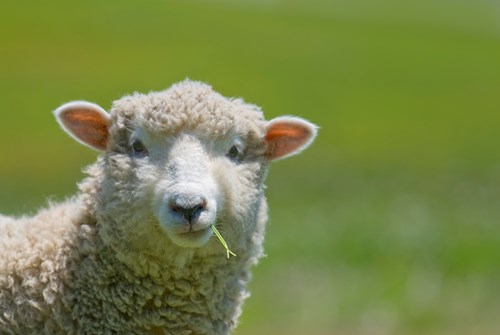SRUC part of £2.9m low-methane sheep project

The three-year initiative will measure methane emissions from a total of 13,500 sheep in 45 flocks
SRUC scientists are lending their expertise to a major new project designed to breed sheep with a naturally low carbon footprint.
The sheep sector has been awarded £2.9 million from DEFRA's Farming Innovation Programme, delivered by Innovate, to carry out the industry wide project called Breed for CH4nge - Breeding Low Methane Sheep.
Led by Innovis, leading supplier of performance-recorded rams, the three-year initiative will measure methane emissions from a total of 13,500 sheep in 45 flocks, collect the necessary data and build and develop the tools required to genetically reduce methane emissions and improve the efficiency of the national flock.
The project will eventually demonstrate the impact of low-carbon sheep on whole farm carbon footprints and will help English farmers to make a positive contribution to UK agriculture’s journey towards net zero.
Innovis will partner with other progressive, performance-recording maternal sheep breeder groups including Sheep Improvement Group (SIG), breeding the Exlana, Performance Recorded Lleyn Breeders (PRLB) and the Centurion Group of Dorset Sheep Breeders to deliver the research and host on farm events.
Scientific input, technology and additional genetics expertise will be provided by SRUC and Harper Adams University, while Signet Breeding Services, part of AHDB, will provide performance recording services. Industry and supply chain partners – Centre for Innovation Excellence in Livestock (CIEL), Pilgrims Pride and Waitrose, will help steer farm system modelling including the use of carbon calculators and will drive an integrated knowledge exchange programme. National Sheep Association (NSA) will provide a direct and important link with the wider industry and a ‘guiding hand’ regarding policy issues.
SRUC’s Dr Nicola Lambe said: “This will build on international research on breeding to reduce methane emissions from sheep, to the point of industry implementation in UK flocks.”
Innovis chief executive, Dewi Jones explains: “We are an alliance of forward-thinking sheep farmers and commercially driven breeders applying genetic science and using performance-recording to deliver profitable maternal genetics at significant scale, all of which are designed to make the most efficient use of grass and forage to produce sustainable and healthy lamb of high nutritive value. Making use of grasslands by way of sheep grazing also helps sequester carbon into the soil.
“This partnership unifies us with academics, a key lamb supply-chain and industry bodies whose networks extend to thousands of English and UK sheep farmers. We’ve all delivered many successful projects, applied research results on-farm and communicated with a wide audience but never before combined forces; BLMS will consequently build on and strengthen existing relationships.”
The project will initially develop on-farm protocols and use new innovative tools and technologies including Portable Accumulation Chambers (PAC) to predict methane emissions from grazing sheep alongside measures of health, production and efficiency traits at the individual animal level.
Further measurements, including rumen size and microbiota, will improve understanding of the underlying biology and ensure that reductions in methane emissions positively contribute to sustainable genetic improvement of ewe productivity on UK grass and forage.
This comprehensive set of information will enable understanding of the genetic control of these characteristics and DNA sampling will allow relationships with the underlying genome of the sheep to be investigated. This will result in tools to compare the breeding value of sheep in the flocks, identifying breeding stock that will contribute to improving farm carbon footprint.
Dr Mark Young of CIEL said: “Modern genetic tools provide the means to focus in on hard to measure traits like methane production then incorporate them into balanced breeding programmes using DNA based genomics tools. The wider breeding programmes that Innovis, PRLB, SIG and Centurion run use such tools very effectively so they are well-placed to reduce emissions and improve the efficiency of sheep production using genetics. This is greatly needed to meet our Net Zero aspirations.”
To widen the Breed for CH4nge project’s impact beyond the 45 flocks involved, plans are to roll out a wide-reaching communication programme with other sheep breeders and farmers throughout England, in collaboration with supply chain partners and wider industry bodies, including NSA. The initiative will be designed to identify the most effective ways of communicating the project’s outputs and implications to other farmers and help support them to make genetic changes.
Posted by SRUC on 07/07/2023
